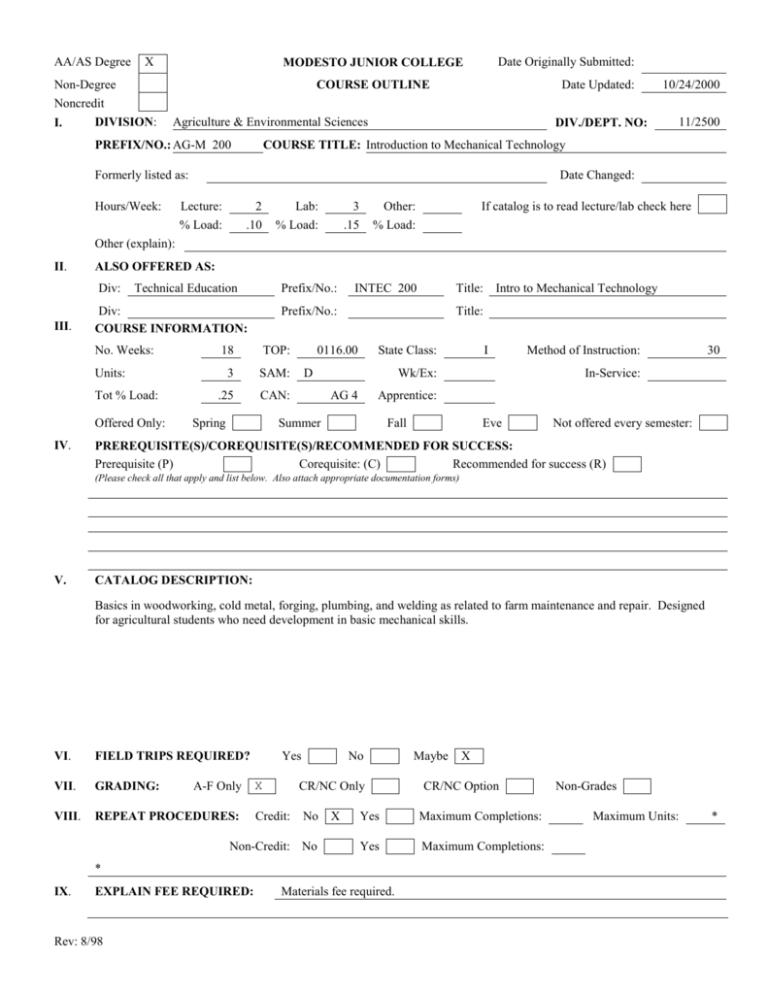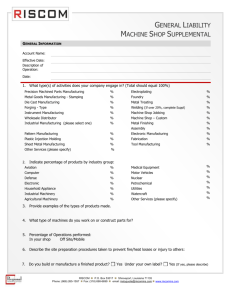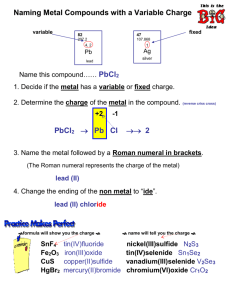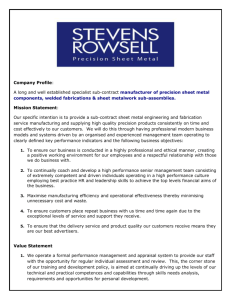course outline - Modesto Junior College
advertisement

AA/AS Degree X Date Originally Submitted: MODESTO JUNIOR COLLEGE Non-Degree Date Updated: COURSE OUTLINE 10/24/2000 Noncredit I. DIVISION: Agriculture & Environmental Sciences PREFIX/NO.: AG-M 200 DIV./DEPT. NO: COURSE TITLE: Introduction to Mechanical Technology Formerly listed as: Hours/Week: 11/2500 Date Changed: Lecture: 2 Lab: 3 Other: % Load: .10 % Load: .15 % Load: If catalog is to read lecture/lab check here Other (explain): II. ALSO OFFERED AS: Div: III. Technical Education Div: COURSE INFORMATION: No. Weeks: Tot % Load: Offered Only: INTEC 200 Title: Intro to Mechanical Technology Prefix/No.: 18 TOP: 3 SAM: .25 CAN: Units: IV. Prefix/No.: Spring Title: 0116.00 State Class: D I Method of Instruction: Wk/Ex: AG 4 30 In-Service: Apprentice: Summer Fall Eve Not offered every semester: PREREQUISITE(S)/COREQUISITE(S)/RECOMMENDED FOR SUCCESS: Prerequisite (P) Corequisite: (C) Recommended for success (R) (Please check all that apply and list below. Also attach appropriate documentation forms) V. CATALOG DESCRIPTION: Basics in woodworking, cold metal, forging, plumbing, and welding as related to farm maintenance and repair. Designed for agricultural students who need development in basic mechanical skills. VI. FIELD TRIPS REQUIRED? VII. GRADING: VIII. REPEAT PROCEDURES: A-F Only Yes X No CR/NC Only Credit: No Non-Credit: No X EXPLAIN FEE REQUIRED: Rev: 8/98 X CR/NC Option Yes Maximum Completions: Yes Maximum Completions: * IX. Maybe Materials fee required. Non-Grades Maximum Units: * 2 AG-M 200 Introduction to Mechanical Technology X. PREREQUISITE SKILLS Before entering the course, the student will be able to: XI. OBJECTIVES (Expected outcomes for students) Upon successful completion of the course, the student will be able to: A. Differentiate between the four different metal joining processes demonstrated in class. B. Select the proper method of joining metals and materials. C. Identify the tools, materials, and machines found in the farm shop. D. Demonstrate the correct use, care, and maintenance of the tools, materials, and machines commonly found in the farm shop. E. Compute common shop problems regarding measuring and ordering supplies and equipment for given applications. F. Demonstrate common shop safety practices. G. Identify safety hazards and eliminate them before accidents occur. H. Identify and care for various kinds of rope. I. Demonstrate knowledge of rope knots by tying several useful knots and splices. J. Prepare a simple three-dimension drawing showing top, end, and side views. K. Apply the techniques of sharpening and refitting the more common farm tools. L. Demonstrate the method to forge and temper a cold chisel using a forge for the source of heat. M. Explain the methods of painting, types of paints, their preferred uses, and cleanup procedures. N. Select the most adequate (cost and quality) supplies (lumber, steel, materials) for a given situation—fence, building, etc. O. Demonstrate the necessary skills involved in operating farm shop tools. P. Identify types of threads and properly use taps, dies, and tap drills. Q. Measure and thread pipe, and correctly identify the more commonly used fittings. R. Build a wall using concrete block and brick after mixing mortar to suggested recommendations. S. Illustrate knowledge of concrete by forming, pouring, screeding, and finishing a slab to a proper size and slope. T. Assemble an electrical wiring board or display as per instructions. U. Explain the path electricity takes in a circuit. XII. CONTENT A. Rope work Rev: 8/98 1. Types and uses 2. Care 3. Splices 4. Knots 3 AG-M 200 Introduction to Mechanical Technology B. Farm woodwork 1. Measuring, marking 2. Hand tools, their care, proper use and operation 3. Power tools—how to operate, adjust, and repair 4. Safety rules and considerations C. Cold metal 1. Use and sharpening of hand bench tools such as chisels, punches, scribers, taps, and dies 2. Operation and care of power metal working tools 3. Bending, drilling, marking, threading, and sawing metal D. Hot metal 1. Use and care of gas torch for cutting, welding, and heating 2. Operation of electric welder both D.C. and A.C. 3. Forging and heat-treating metal using a forge E. Sheet metal F. 1. Layout 2. Cutting and bending 3. Soldering 4. Operation and care of sheet metal tools Plumbing 1. Operation and care of plumbing tools 2. Types of fittings 3. Layout and measuring G. Construction materials 1. Properties of metals, woods, etc. 2. Figuring bills of materials 3. Fasteners of all types H. Blueprints I. 1. Sketching 2. Reading blueprints Concrete 1. Physical properties 2. Estimating quantities 3. Figuring costs 4 AG-M 200 Introduction to Mechanical Technology J. Paints 1. Types 2. Estimating quantities 3. Mixing 4. Application K. Electrical XIII. 1. Splices 2. Lighting circuit 3. Receptacle circuit TEACHING METHODS A. B. Methods to achieve course objectives: 1. Lecture/discussion/demonstration/audio-visual materials. 2. Assigned reading. 3. Require drawings and assignments. 4. Evaluative projects, quizzes, midterms, and finals. 5. Laboratory exercises. 6. Field trips when appropriate. Methods used in achieving learner independence and critical thinking: 1. 2. XIV. Written assignments that include: a. Problem-solving. b. Cost-efficiency evaluation. c. Cost-effectiveness comparisons. d. Project drawing and planning. Practical application: a. Implementation of ideas, plans, and procedures. b. Identification of potential weaknesses, stress points, and strengths. c. Selection of proper materials and applications. TEXTBOOKS (Typical) Mechanics in Agriculture, Phipps & Reynolds, 4th Edition, Interstate Publishers, 1992 AG-M 200 Syllabus – George Cardoza – revised Fall 2000 XV. SPECIAL STUDENT MATERIALS (i.e., protective eyewear, aprons, etc.) State law requires safety glasses for all students. 5 AG-M 200 Introduction to Mechanical Technology XVI. METHODS OF EVALUATING STUDENT PROGRESS A. Written examinations B. Evaluation of skills C. Grading projects








